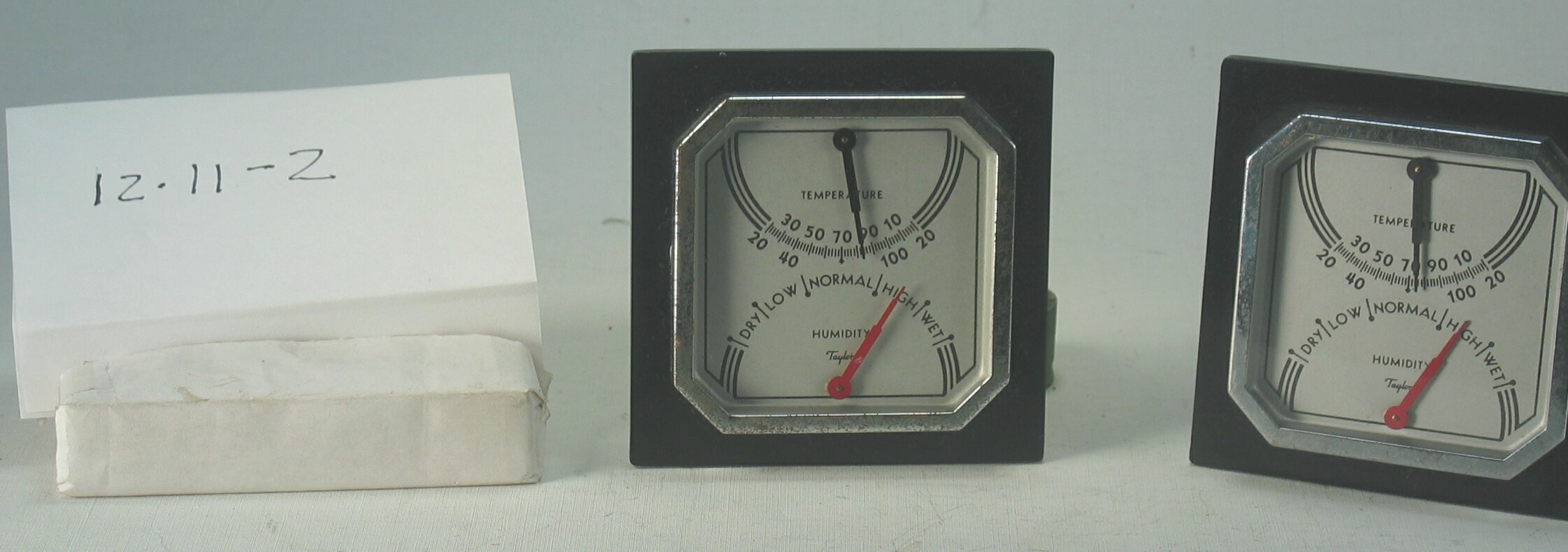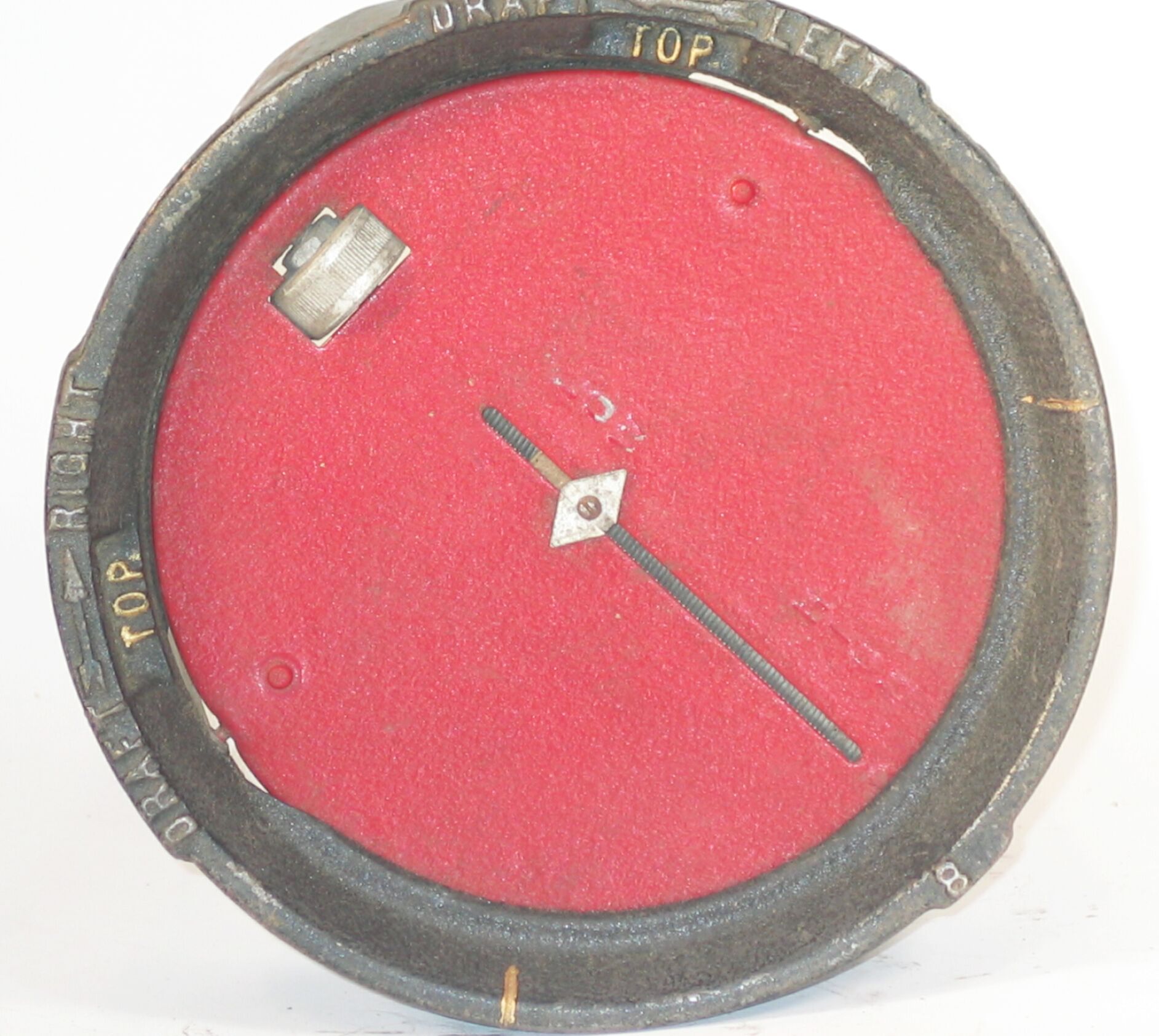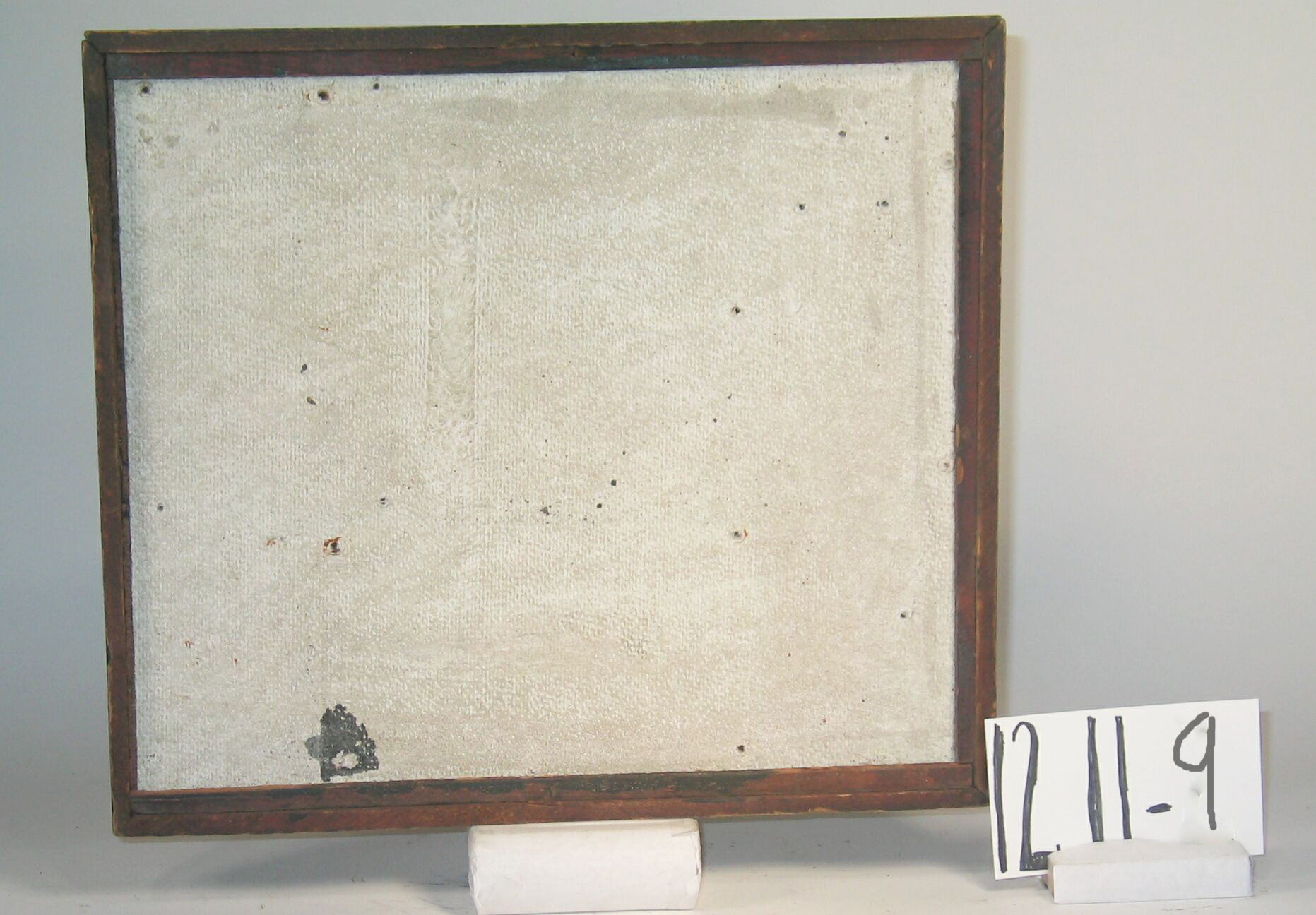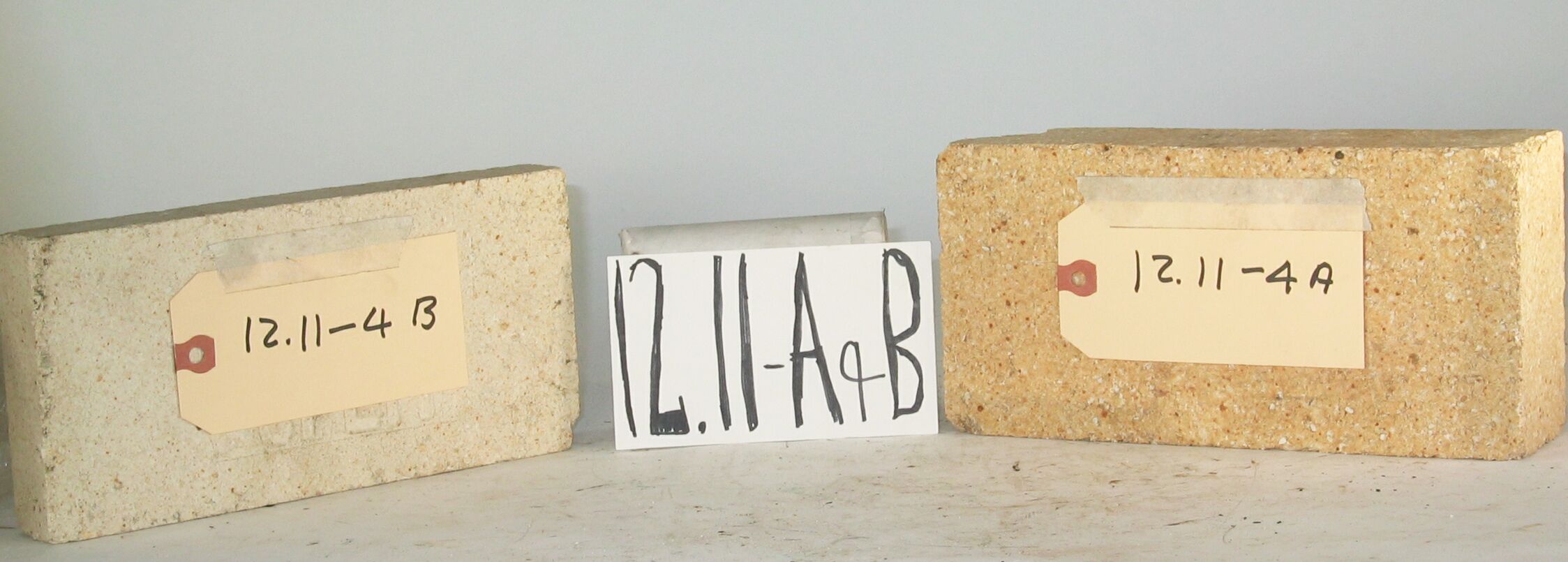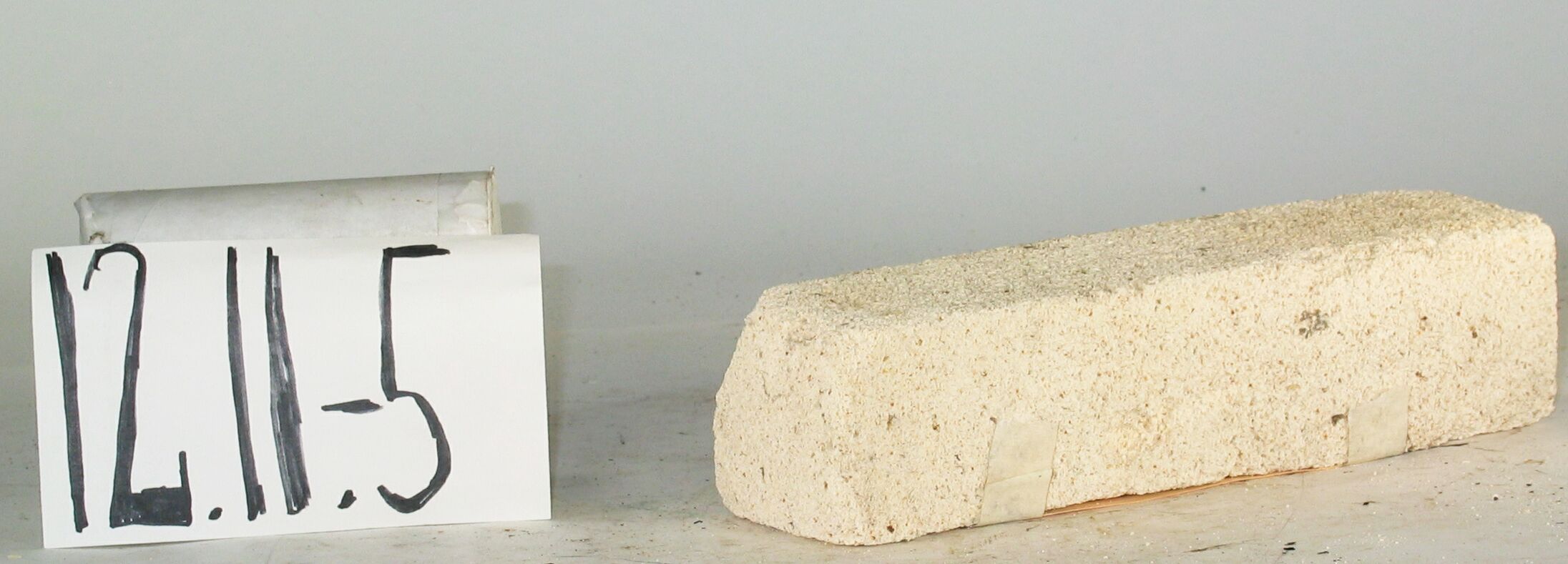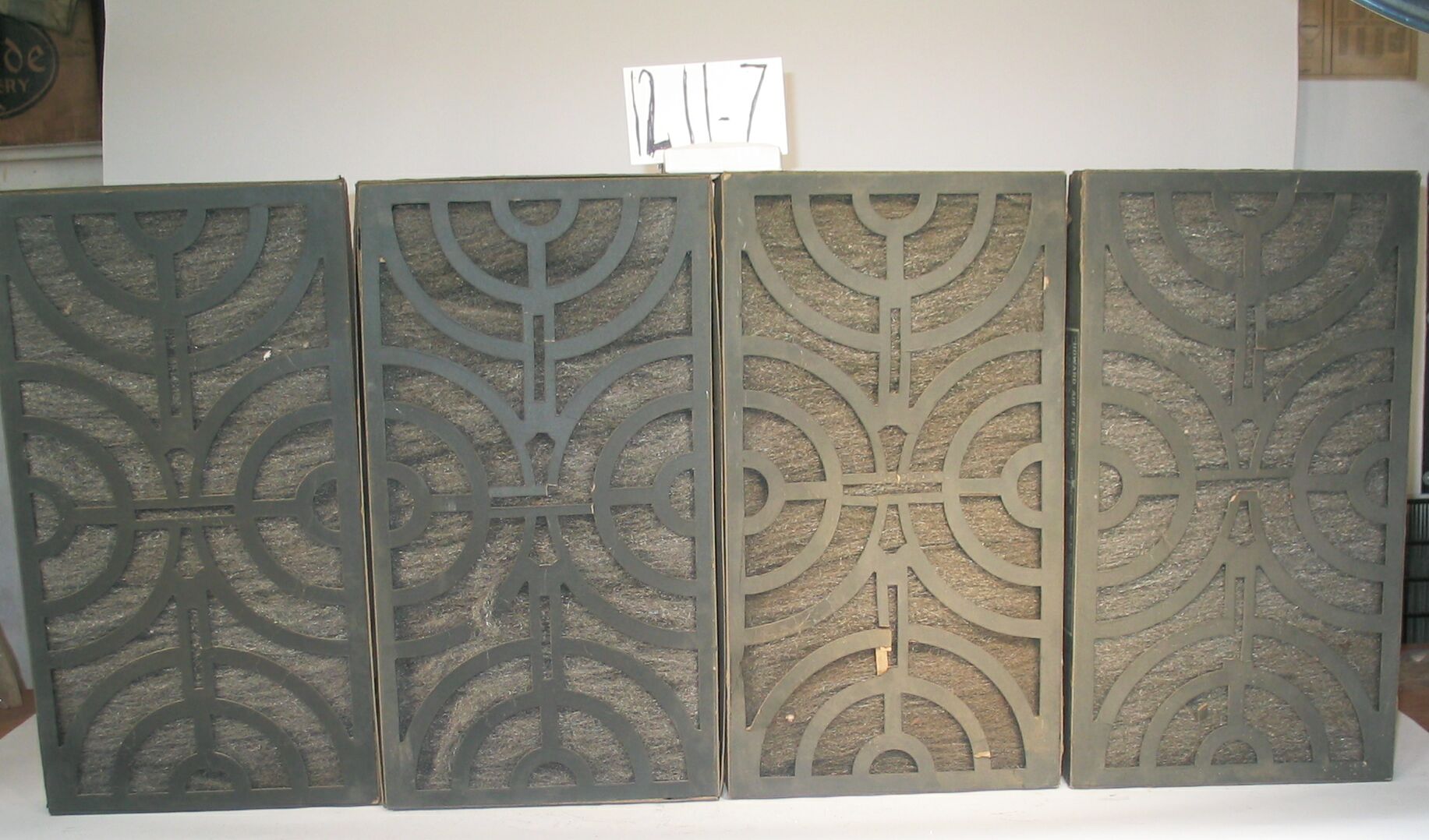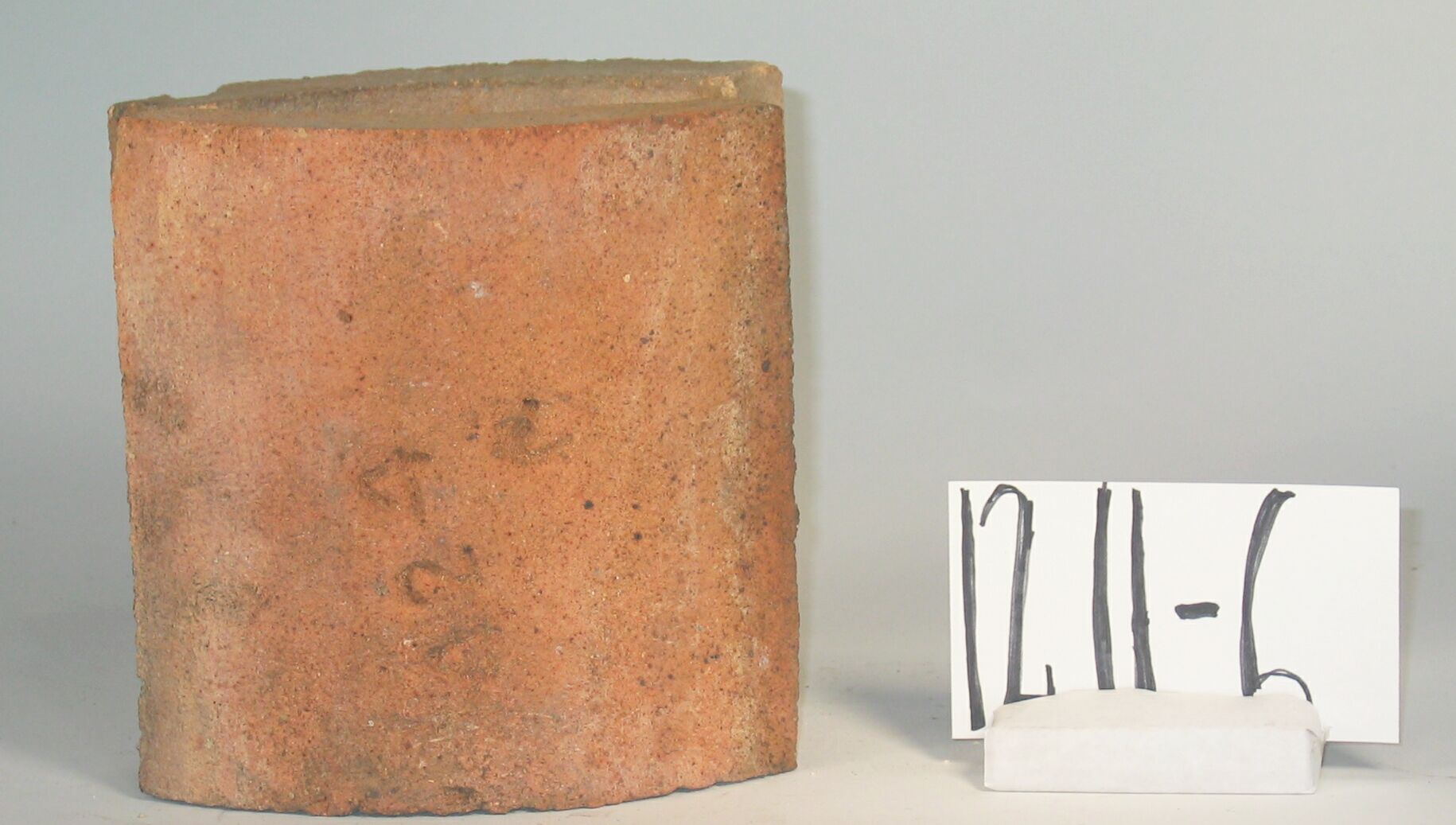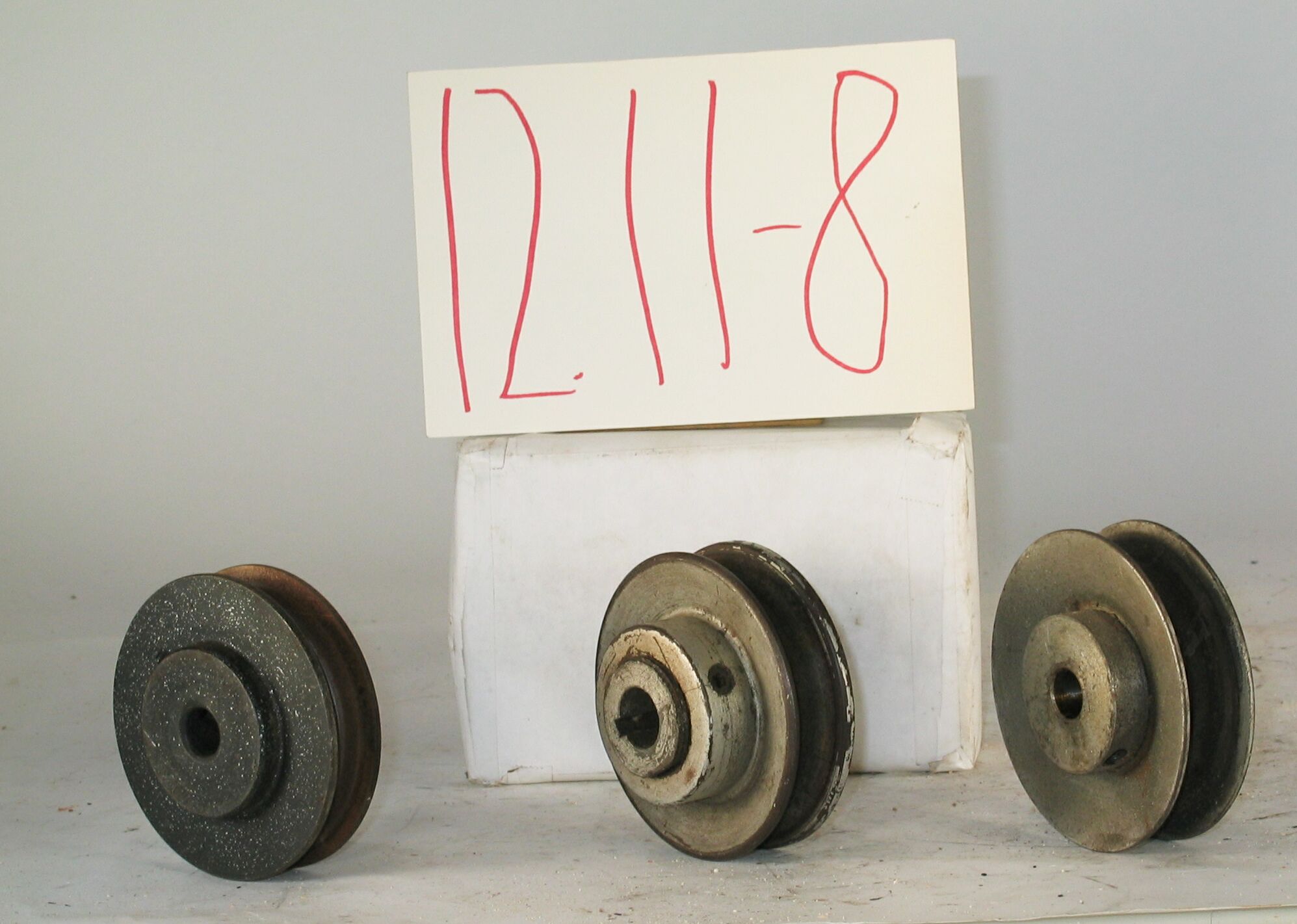12.11-1: RP 1952 Humidity Controller
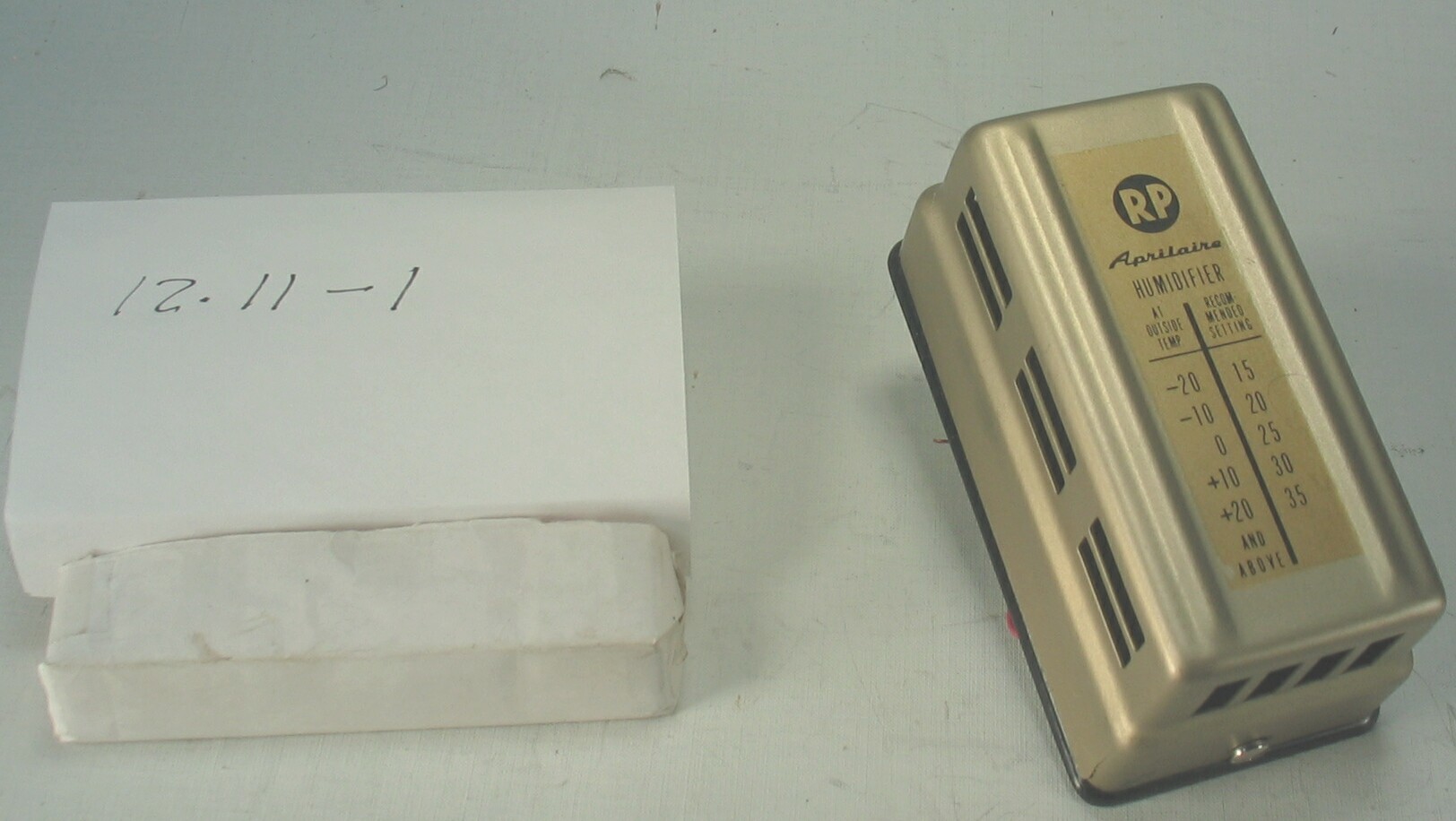
| HHCC Accession No. 2006.098 | HHCC Classification Code: 12.11-1 |
|---|
Description:
A mid 20th century, humidity controller, ‘humidistat’, for the Canadian home. A ‘low tech’ device, using materials found in nature, it employed treated human hair for its actuating element. Stencilled for ‘RP’, Research Products, a leading manufacturer of humidifiers for forced air, oil fired heating applications in the post W.W.II years, it tells many stories of emerging humidification technology, through to the introduction of solid state humidity sensors, Penn, Type 842, circa 1952.
Group:
12.11 Pressure Atomizing Oil Burner Equipment and Systems - Other Components and Parts
Make:
Pen for RP
Manufacturer:
Pen Electric Switch Co. Goshen, Ind.
Model:
Type 842, Model1024
Serial No.:
Size:
2 x 1.5 x 4 ‘h
Weight:
4 ozs.
Circa:
1952
Rating:
Exhibit, education, and research quality, illustrating the styling and engineering design of mid 20th century humidity controls for the Canadian home
Patent Date/Number:
Provenance:
From York County (York Region) Ontario, once a rich agricultural hinterlands, attracting early settlement in the last years of the 18th century. Located on the north slopes of the Oak Ridges Moraine, within 20 miles of Toronto, the County would also attract early ex-urban development, to be come a wealthy market place for the emerging household and consumer technologies of the early and mid 20th century.
This artifact was discovered in the 1950’s in the used stock of T. H. Oliver, Refrigeration and Electric Sales and Service, Aurora, Ontario, an early worker in the field of agricultural, industrial and consumer technology.
Type and Design:
Low voltage, wall mounted
Construction:
Material:
Special Features:
actuating element of treated human hair classic gold metal sheath with RP, Aprilaire monograph, and customer recommended temperature humidity guide
Accessories:
mounting sub base vestige of original wiring harness
Capacities:
- 10 to 100 % RH
Performance Characteristics:
Operation:
Control and Regulation:
Targeted Market Segment:
Consumer Acceptance:
Merchandising:
Market Price:
Technological Significance:
A mid 20th century, humidity controller, ‘humidistat’, for the Canadian home, developed in a period when engineers, without the range of high tech materials available at century’s end, would look to natural materials with the needed properties, and performance characteristics ‘ here human hair Stencilled for ‘RP’, Research Products, a leading manufacturer of humidifiers designed for forced air, residential oil fired heating applications in the post W.W.II years through to the end of the century, it tells many stories of the emerging humidification technology of the mid 20th century, through to the introduction of solid state humidity sensors.
It would be a period characterised by much research in the field of human comfort. its necessary and sufficient conditions and the means of creating it in Canada’s climate of weather extremes. Warm air heating research would become a legitimate topic for university, as well as industrial research with technical papers and how-to-do-it manuals to follow. In the field of winter humidity control, for example, see ‘Winter Air Heating and Winter Air conditioning’, John Norris McGraw-Hill 1950, Chapter 9, Humidity and the properties of Air. Characteristic of the period and the emerging market for winter comfort was the creation of the National Warm Air Heating and Air Conditioning Association of Canada [forerunner of the Heating, Refrigeration and Air Conditioning Institute of Canada]. Their extensive set of engineering manuals produced through the 1950’and 60’s would be the standards of the field
Industrial Significance:
With the development of the forced air furnace ‘the winter air conditioner’ came many new possibilities for winter comfort, automatic combustion control for solid and liquid fuels [coal and oil], automatic room temperature control, air distribution [well beyond that possible with natural convection], constant air circulation. air filtration, as well as automatic humidification . These features would be promoted by the warm air sector of the industry, as a competitive edge, over the ‘hot water heating systems [hydronic systems] of the times, once considered the preferred type of central heating for all that could afford it. During the 1940’s and 50’s the Howard Furnace Co of Toronto would be an acknowledged leader in the field of winter air conditioning equipment for the Canadian market, see reference. There promotion would read ‘Enjoy filtered, humidified, gently moving air throughout every part of your home’, ‘Have even temperature maintained in all rooms with lowest possible fuel costs and little attention”. This was surely new world experience for Canadians in the middle years of the 20th century
Socio-economic Significance:
Much like the earlier thermostats of the 1920’s and 30’s [See ID # 213 to 219] this Humidistat , too, would be a marker of significantly changing times in Canada, with the possibility of new winter comforts at hand. Clearly evident on the living room wall, with its eye-catching, sophisticated gold enclosure, it would be another marker of ‘conspicuous consumption’ in its times, serving to tell all of the latest and the best which the Canadian heating industry could offer. Automatic humidity control was, in fact, among the significant new ‘public goods’ that the HVACR industry had to offer in the latter part of the 20th century. In much of Canada’s inland climatic zones, dry air was a source of much discomfort and many health problems, even after automatic temperature control had been achieved and marketed widely in Canada.
Socio-cultural Significance:
Donor:
G. Leslie Oliver, The T. H. Oliver HVACR Collection
HHCC Storage Location:
Tracking:
Bibliographic References:
Pen Automatic Controls, Powerlite devices, Toronto, Penn Electric Switch Co. Goshen Ind. 1939 RP, Aprilaire Automatic Humidifier, Service manual Model 110 and 112, Research Products Corp., Madison Wis.
Howard South-Wind, Air Conditioning and heating Unit, Howard Furnace Co. Toronto, sale brochure, undated, circa 1940 ‘Winter Air Heating and Winter Air conditioning’, John Norris McGraw-Hill 1950, Chapter 9, Humidity and the properties of Air.
